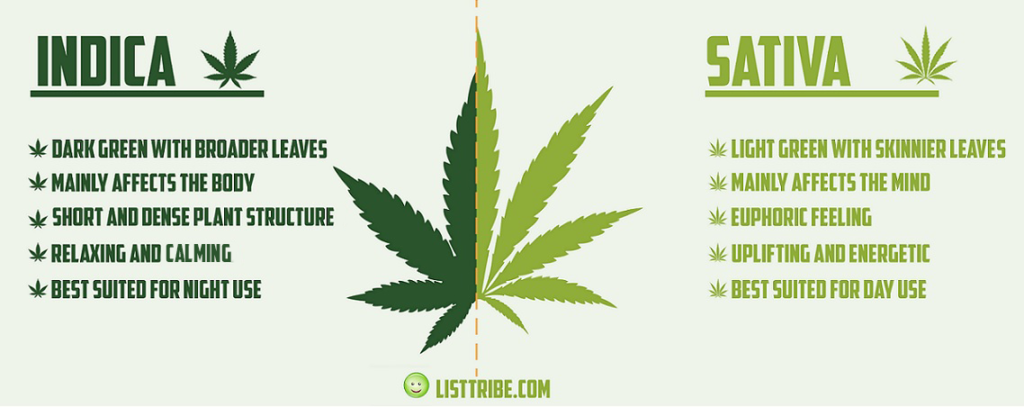As marijuana becomes legalized for recreational purposes in more and more countries, more people are trying the substance for the first time. But seeing the wide range of different options available can be intimidating; vendors like Bud Buddy offer many different varieties in categories like indicas, sativas, and hybrids, as well as peripheral products like edibles and extracts. How are you supposed to know which variety is right for you, and is there really that much of a difference between varieties?
Perceptions of Indicas and Sativas
Let’s start by discussing the core differences between the two main subspecies of cannabis plants: indicas and sativas. Indica plants usually have leaves that are shorter and wider, while sativa plants have leaves that are longer and narrower.
Indicas have a shorter flowering season, which makes them an ideal choice for many growers. It’s also ideal if you’re growing the plant in an area with a mild climate (since sativa plants prefer hotter climates). In general, indicas also have greater yields. By contrast, sativas are indigenous to hotter climates with longer summers, and because they grow taller, they can be hard to grow indoors.
It’s said that these different types of cannabis produce different types of high for the user, though these feelings are subjective and aren’t well understood. Indica is said to have more of a body-based high, and is frequently used during nighttime to induce relaxation and make sleep easier. It’s also frequently used for pain relief, thanks to its supposed sedating effects. Sativa strains, by contrast, tend to produce more of a cerebral, heady high, making them better for daytime use. Users claim to feel more energy when using sativa strains, and typically use them for anti-depressant benefits, or for creative stimulation.
In addition to these two core varieties, there are also hybrid strains. Hybrids attempt to offer the best of both worlds, combining sativas and indicas in different ways to produce different effects. Between these three core varieties, there are thousands, if not tens of thousands of individual strains—individual species of plant—that offer distinct combinations of effects.
Cannabinoids and Terpenes
Why do different strains of cannabis produce different effects in the body? First, you need to understand the core ingredients that make cannabis affect your mind and body. Cannabis is full of different cannabinoids, chemical compounds that affect the neurotransmitters in your brain. There are literally hundreds of cannabinoids, but two of the most frequently occurring ones get most of the attention.
First, there’s tetrahydrocannabinol, otherwise known as THC. THC is known as the element of marijuana responsible for its psychoactive effects; in other words, it’s the compound that makes you feel high. Second, there’s cannabidiol, CBD, which is responsible for stimulating many of the anti-anxiety and pain relief effects of marijuana. These compounds occur in different levels within different strains of marijuana, and are sometimes isolated to produce their effects independently. For example, some people use CBD oil and CBD-based products to relieve anxiety or pain without experiencing the psychoactive high associated with THC.
We also need to consider terpenes, which are organic compounds present in many types of plant life. Terpenes give off a distinctive scent ranging from floral to citrus-like, and may play a role in both the high you experience from marijuana and the overall experience of consuming it. It’s not certain exactly how terpenes affect the body.
Cannabis growers create different strains to capitalize on specific combinations of these ingredients, in order to influence certain effects in the body (or make those effects stronger). That way, people with specific preferences can get a strain that relieves their discomfort without creating a harsh experience, and people who are more or less sensitive to cannabis can improve their experience accordingly.
Subjectivity: What Works Best?
There’s no such thing as a “perfect” strain of cannabis, nor is the general description of a specific strain a guarantee of how it will feel to you, personally. You may be more or less sensitive to the drug, or may be influenced by secondary factors that interfere with your perceptions, including the form in which you consume it. You’ll need to carefully consider which drug effects you’re most interested in, and choose a strain that closely aligns with them. Don’t be surprised if you need to experiment and try a few different varieties before you land on a combination that works for your preferences and needs.


 How Social Media Marketing Can Improve Your Small Business
How Social Media Marketing Can Improve Your Small Business